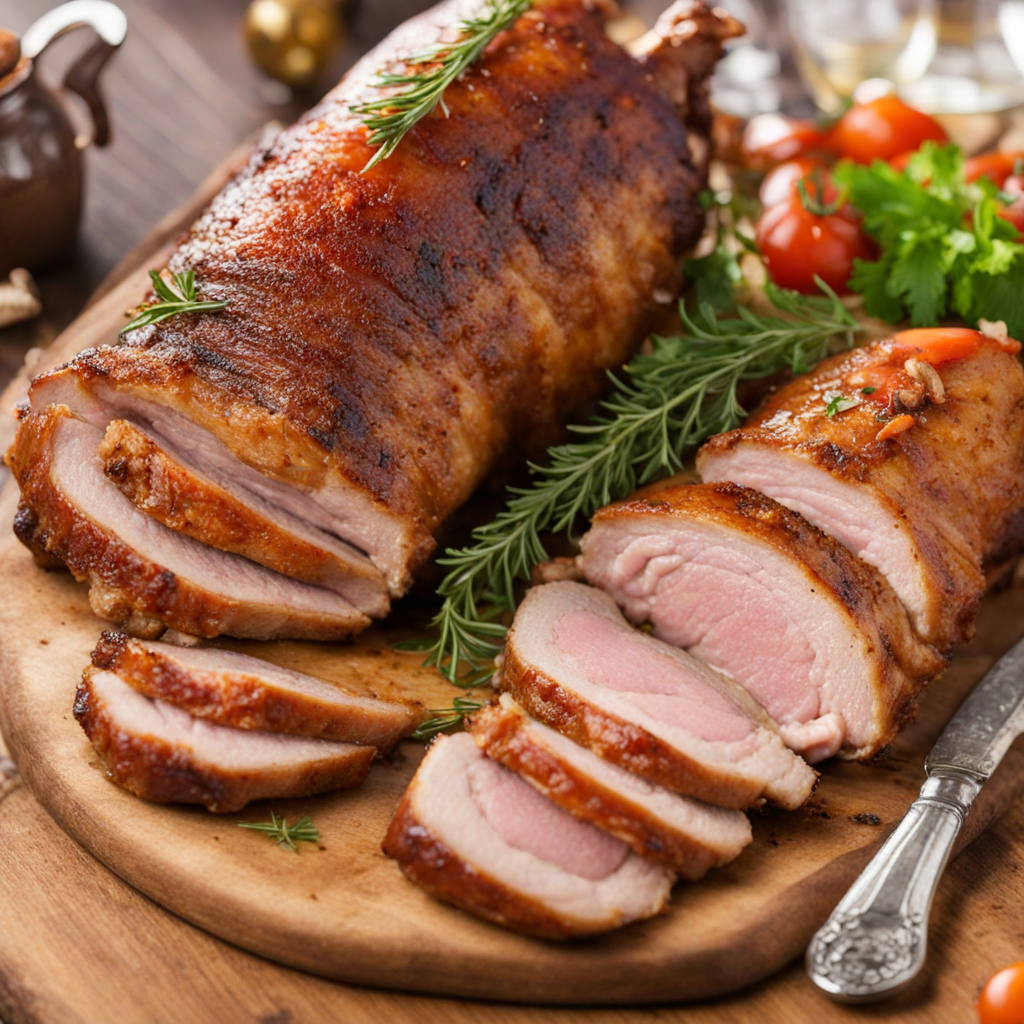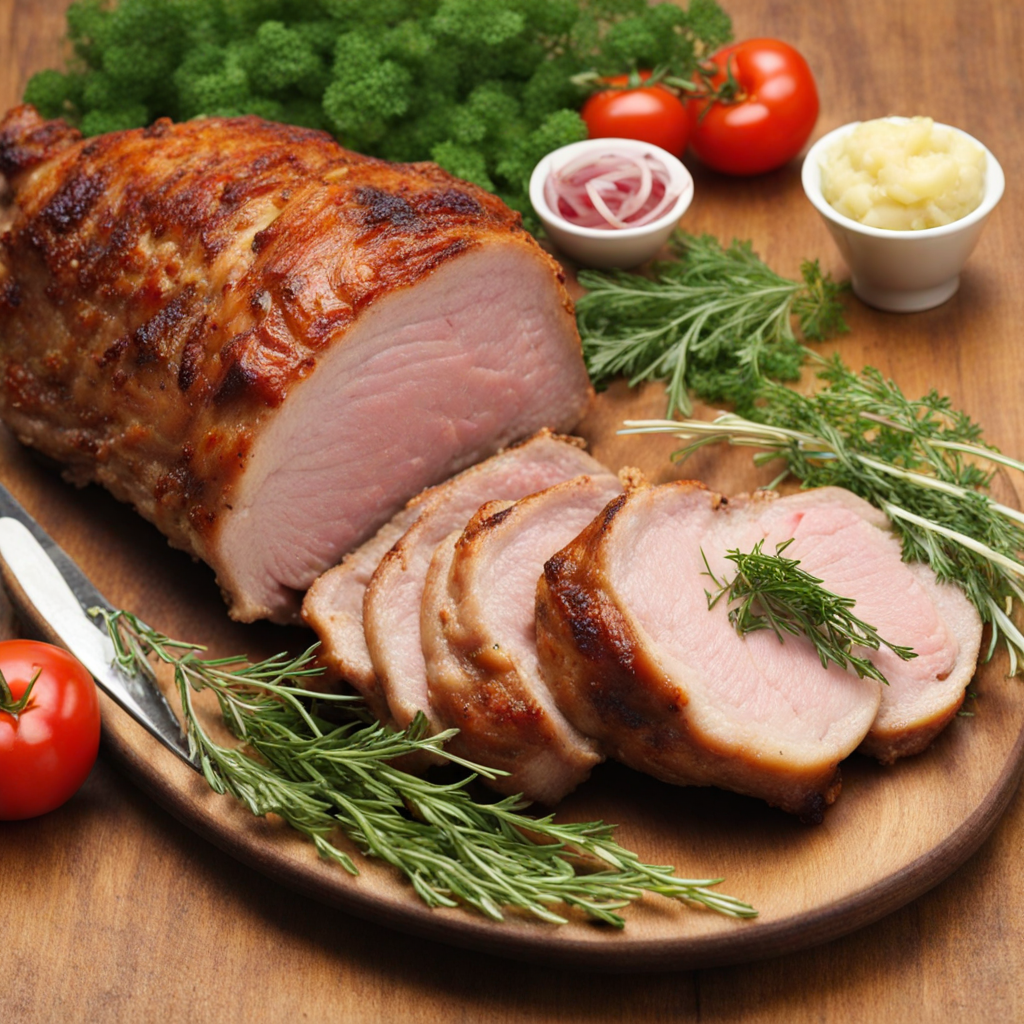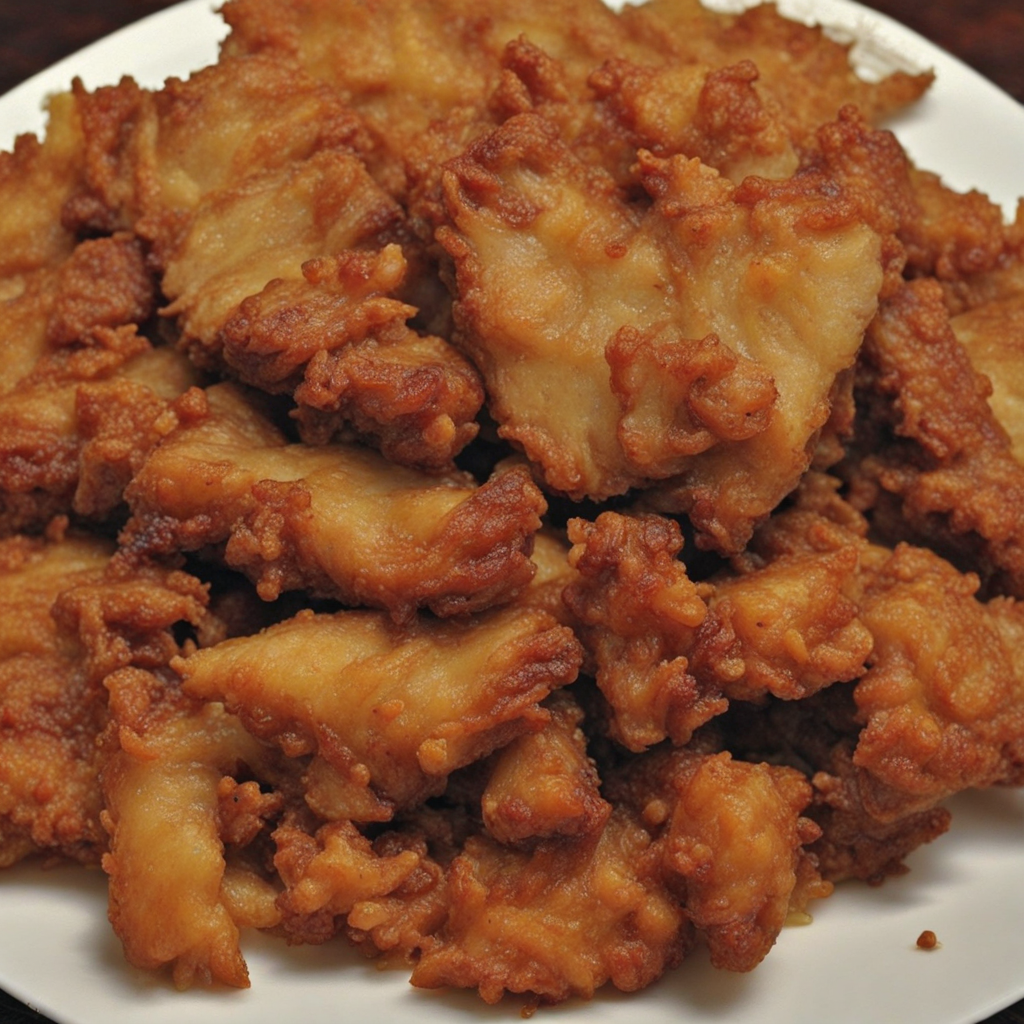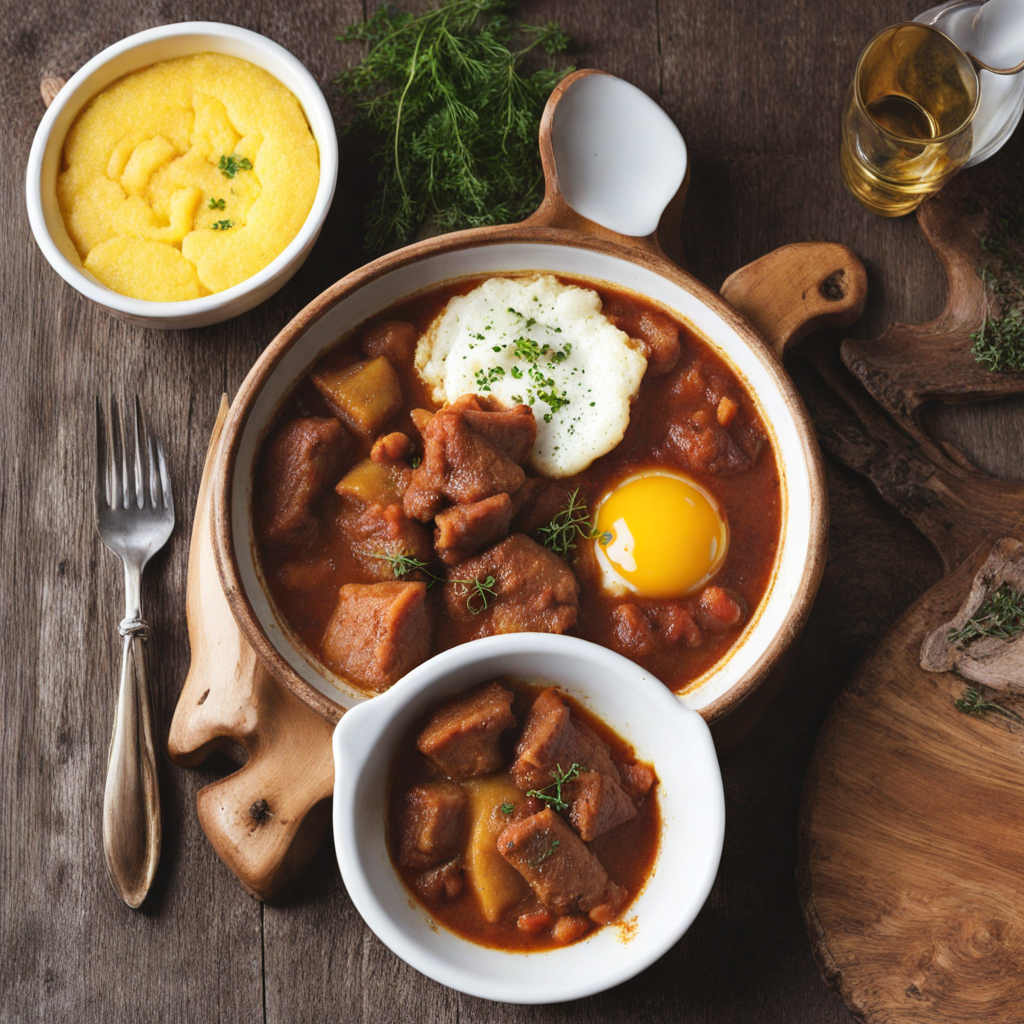Roasted Pork
Roasted pork, or "porc la cuptor," is a cherished dish in Romanian cuisine that showcases the rich flavors and culinary heritage of the country. This dish typically features a whole pig, marinated with a blend of spices and herbs, including garlic, thyme, and paprika, which infuse the meat with a savory depth. The pork is often seasoned generously, allowing the natural flavors to shine through as it slowly roasts in the oven, resulting in a tender and juicy interior, while the skin becomes irresistibly crispy and golden brown. This combination of textures creates a truly satisfying experience for the palate. In Romania, roasted pork is often associated with festive occasions and gatherings, making it a centerpiece at family celebrations, traditional feasts, and holiday meals. It is usually served with a variety of sides that complement its rich flavor, such as creamy polenta, tangy pickles, or a fresh salad. The contrast of the crispy skin with the succulent meat is a hallmark of this dish, making each bite a delightful combination of crunch and tenderness that evokes a sense of comfort and nostalgia for many Romanians. Pairing roasted pork with local Romanian wines can elevate the tasting experience even further. The robust flavors of the meat harmonize beautifully with a glass of Fetească Neagră or a refreshing white like Fetească Regală, enhancing the overall enjoyment of this traditional dish. For those looking to explore authentic Romanian cuisine, indulging in roasted pork is a must, as it encapsulates the essence of the country’s culinary traditions and the warmth of its hospitality.
How It Became This Dish
The History of Porchetta in Romania Porchetta, a savory, boneless pork roast, has a fascinating history that transcends borders and has found its way into the culinary traditions of various cultures, including Romanian cuisine. While porchetta is most commonly associated with Italy, its Romanian counterpart reflects the rich tapestry of the country’s culinary landscape and its historical influences. #### Origins and Early History The roots of porchetta can be traced back to ancient Rome, where it was a staple in the diets of both soldiers and civilians. The Roman soldiers would roast whole pigs, seasoned with herbs and spices, as they marched through the Italian countryside. This method of cooking was not only practical but also allowed for the preservation of meat over long periods, making it ideal for those on the move. As the Roman Empire expanded, its culinary traditions spread throughout Europe, influencing local cuisines. In Romania, the love for roasted pork can be seen as a cultural echo of these ancient practices. The use of whole animals for festive occasions, especially during significant celebrations, became a staple in Romanian cuisine. In the rural areas of Romania, the tradition of roasting pork for family gatherings and holidays, particularly at Christmas and Easter, began to flourish. The way pork was prepared and seasoned took on unique local flavors, incorporating indigenous herbs and spices that differentiated it from its Italian predecessor. #### Cultural Significance Porchetta holds a special place in Romanian culture, symbolizing hospitality and celebration. It is often prepared for significant life events such as weddings, christenings, and large family gatherings. The dish embodies the spirit of togetherness, as families and friends unite around a table to share a meal steeped in tradition. The preparation of porchetta in Romania often involves marinating the pork with a blend of garlic, thyme, and other local herbs. This not only enhances the flavor but also showcases the deep connection between Romanian cuisine and the country’s agricultural practices. The reliance on local herbs reflects a harmonious relationship with the land, where the flavors of the region come alive. In the Romanian countryside, the preparation of porchetta is often a communal affair, bringing together families and neighbors in a celebration of food and community. This communal aspect of cooking reinforces the social fabric of rural life, where food becomes a medium for connection and shared experiences. #### Development Over Time As Romania evolved through the centuries, so too did the practice of making porchetta. The dish underwent various adaptations influenced by regional ingredients and culinary techniques. In the early 20th century, with the emergence of modern culinary practices, porchetta began to be served in restaurants and at public festivals, further popularizing its presence in Romanian culture. During the communist era, the availability of ingredients became limited, and the preparation of traditional dishes like porchetta had to adapt to these constraints. Many cooks turned to innovative methods to create similar dishes, often using more affordable cuts of meat or incorporating vegetables into the mix. Despite these changes, the essence of porchetta as a celebratory dish remained intact. In contemporary Romania, porchetta has experienced a renaissance, particularly with the rise of interest in traditional foods and local gastronomy. Chefs and home cooks alike have embraced the dish, preparing it in both traditional and modern interpretations. The resurgence of farm-to-table dining has also encouraged a renewed appreciation for locally sourced ingredients, allowing for the preparation of porchetta that honors its origins while celebrating Romania's diverse agricultural bounty. #### Regional Variations One of the fascinating aspects of porchetta in Romania is the regional variations that have emerged over time. In Transylvania, for example, porchetta might be seasoned with a touch of smoked paprika and served alongside polenta, reflecting the region's Hungarian influences. In contrast, in the Moldavian region, you may find it prepared with a more pronounced garlic flavor, often accompanied by a side of pickled vegetables, highlighting the importance of preserved foods in Romanian cuisine. Moreover, the dish has found its way into street food culture in cities like Bucharest and Cluj-Napoca, where vendors serve porchetta sandwiches, showcasing the dish's adaptability and appeal to modern tastes. This evolution has not only kept the tradition alive but has also introduced it to new generations who may have never experienced the dish in its traditional form. #### Conclusion Porchetta in Romania is more than just a dish; it is a celebration of history, community, and the enduring connection between people and their food. From its ancient Roman roots to its contemporary interpretations, porchetta has woven itself into the fabric of Romanian culinary culture. Today, as Romania continues to embrace its gastronomic heritage, porchetta stands as a testament to the country’s ability to adapt and innovate while honoring its traditions. Whether enjoyed at a festive gathering, in a bustling market, or at a family dinner, porchetta remains a beloved dish that continues to bring people together, embodying the spirit of Romanian hospitality and the joy of sharing a meal. In exploring the history of porchetta, we uncover not only the evolution of a dish but also the story of a nation that has, through its food, preserved its identity, culture, and community through the ages.
You may like
Discover local flavors from Romania







